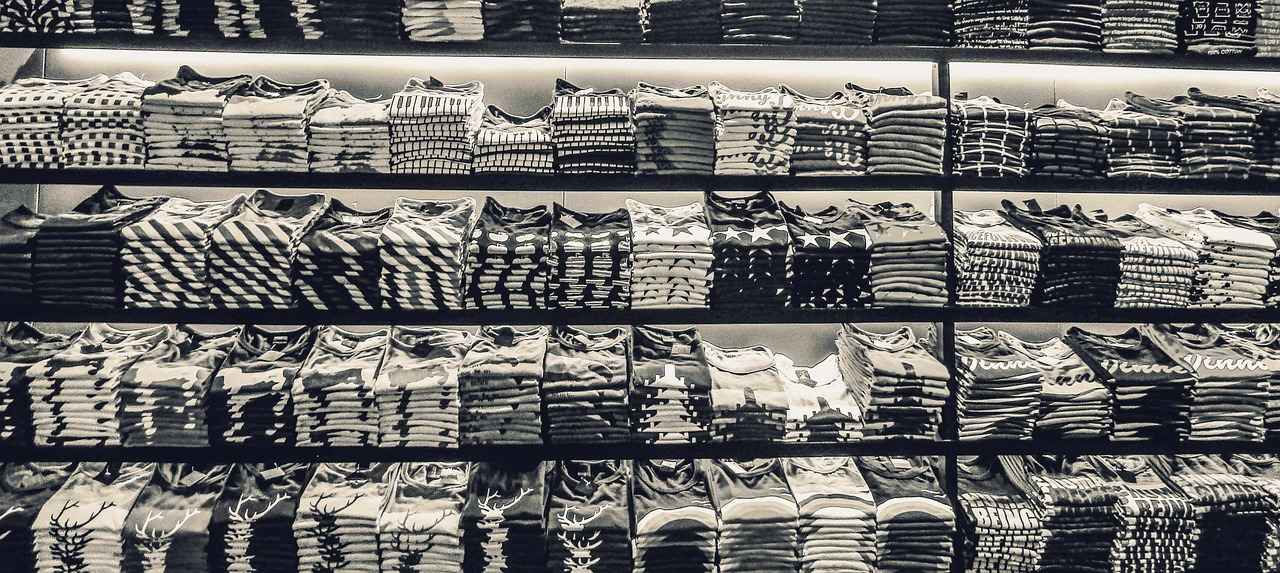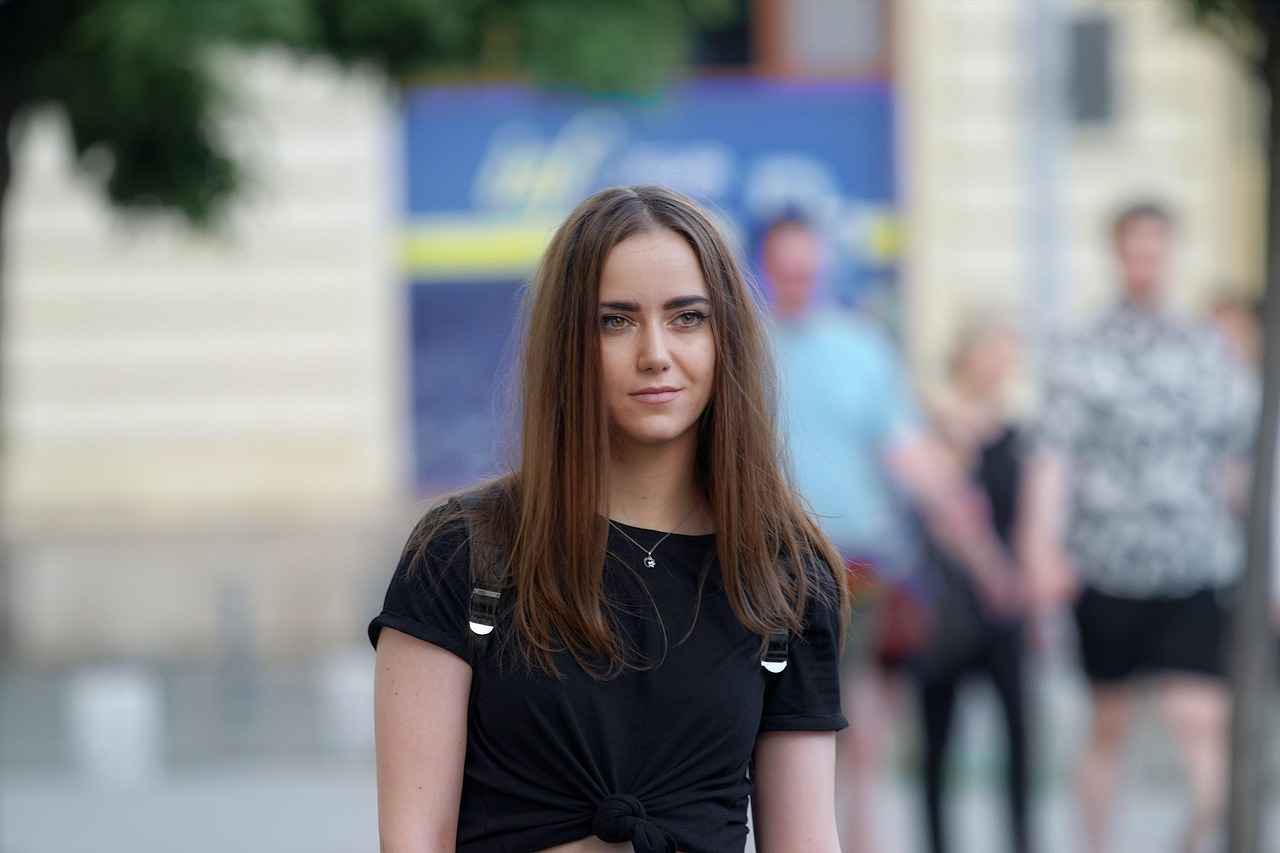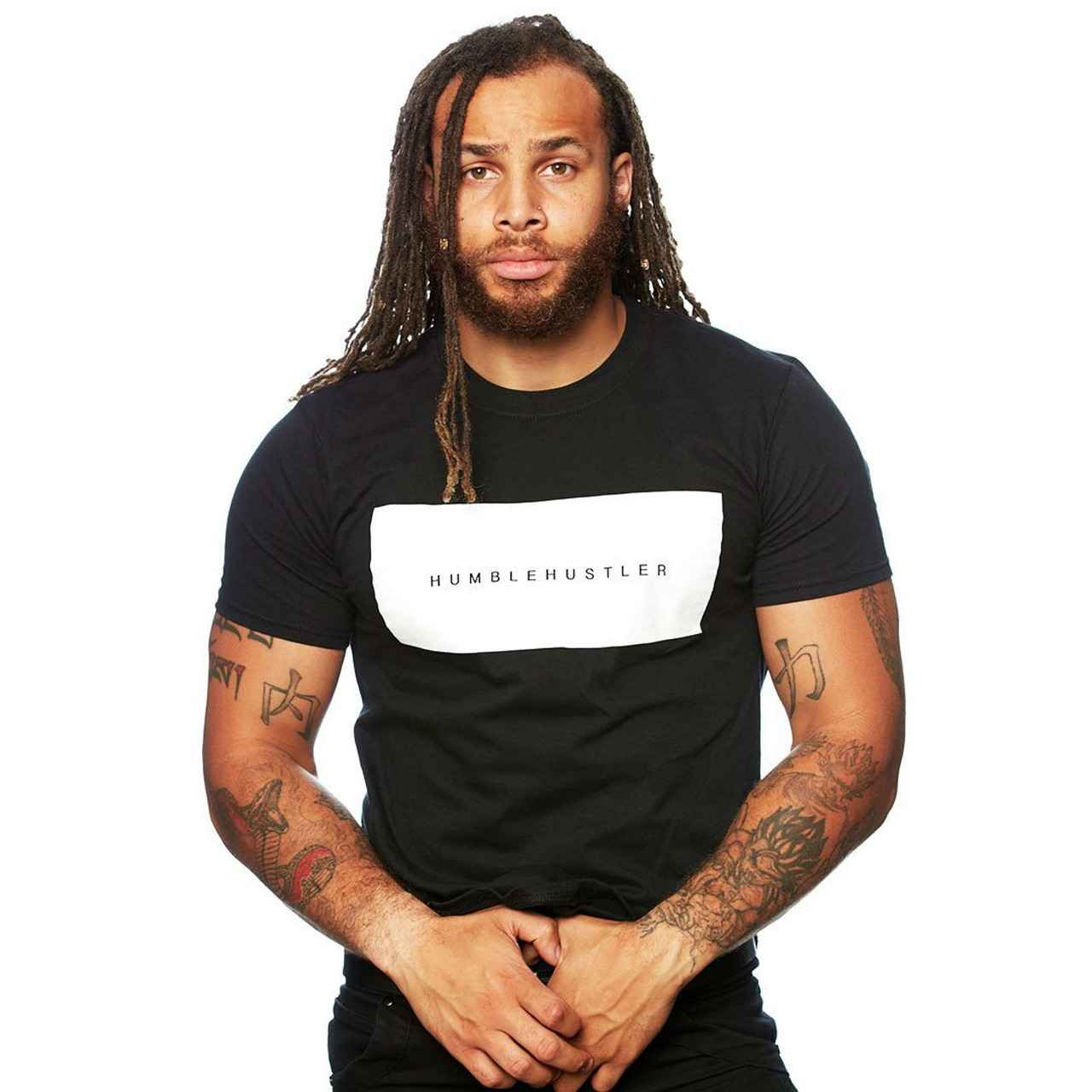This article delves into the creative process of designing custom t-shirts using personal photos. It offers valuable insights, tips, and techniques to help your designs truly stand out.
Why Choose Custom T-Shirts?
Custom t-shirts are an excellent way to express your individuality and creativity. They can serve as unique gifts, promotional items, or personal fashion statements that reflect your personal style and cherished memories.
Understanding the Design Process
The design process is a crucial step that involves selecting images, choosing colors, and determining placement. Understanding these elements is essential for creating visually appealing custom t-shirts.
- Choosing the Right Image: A high-quality image is vital for t-shirt printing. It should be clear, vibrant, and meaningful to ensure the final product meets your expectations.
- Image Resolution and Quality: Aim for at least 300 DPI to avoid pixelation and ensure crisp details in your custom t-shirt design.
- Image Licensing and Copyright: Ensure you have the rights to use the selected image to avoid legal issues and maintain originality.
Design Software and Tools
There are various software options available for designing custom t-shirts, ranging from user-friendly online platforms to professional graphic design software. Choose one that suits your skill level and design needs.
Choosing the Right T-Shirt Material
The choice of fabric significantly affects the overall look and feel of the t-shirt. Popular materials include:
| Material | Benefits |
|---|---|
| Cotton | Breathable and comfortable |
| Polyester | Durable and moisture-wicking |
| Blends | Combines benefits of both |
Eco-Friendly Options: Sustainable materials are increasingly popular. Consider using organic cotton or recycled fabrics to create a more environmentally friendly custom t-shirt.
Printing Techniques Explained
Different printing methods can affect the quality and durability of your designs. Here are some common techniques:
- Screen Printing: Known for vibrant colors and durability, ideal for bulk orders.
- Direct-to-Garment (DTG) Printing: Allows for intricate designs with many colors, best for smaller orders.
Tips for Effective T-Shirt Design
Creating a successful t-shirt design involves thoughtful planning. Here are some practical tips:
- Color Theory Basics: Understanding color theory can help create harmonious designs.
- Typography and Fonts: Choose fonts that are legible and match the overall theme.
Finalizing Your Custom T-Shirt Order
Once your design is complete, review all details before placing your order to avoid errors. Always request a proof to ensure your design appears as intended.
Conclusion: Making Your Mark with Custom T-Shirts
Designing custom t-shirts with your own photos is a fun and rewarding way to express your individuality. With the right tools and techniques, you can create unique pieces that tell your story.

Why Choose Custom T-Shirts?
Custom t-shirts are more than just clothing; they are a canvas for personal expression and creativity. In today’s world, where individuality is celebrated, these t-shirts offer a unique way to showcase your personality, beliefs, and memories. Whether you’re looking to give a special gift, promote a brand, or simply wear something that reflects your style, custom t-shirts are an ideal choice.
One of the most compelling reasons to choose custom t-shirts is their ability to serve as unique gifts. Imagine giving a loved one a t-shirt adorned with a cherished photo or a meaningful quote. Such gifts not only convey thoughtfulness but also create lasting memories. Additionally, custom t-shirts can be tailored for various occasions, such as birthdays, weddings, or family reunions, making them versatile and appreciated.
Moreover, custom t-shirts are an effective tool for promotional items. Businesses can use them to enhance brand visibility and create a sense of community among customers. A well-designed t-shirt featuring a company logo or slogan can turn customers into walking advertisements, spreading brand awareness wherever they go.
On a personal level, custom t-shirts allow individuals to make bold fashion statements. They can reflect personal interests, hobbies, or even social causes, allowing wearers to connect with like-minded individuals. Furthermore, the design process itself is an opportunity for creativity, enabling you to experiment with colors, images, and text to craft something truly unique.
In conclusion, custom t-shirts are a powerful medium for personal expression, making them perfect for gifts, promotions, and personal style. They not only reflect individual creativity but also foster connections and memories that last a lifetime.
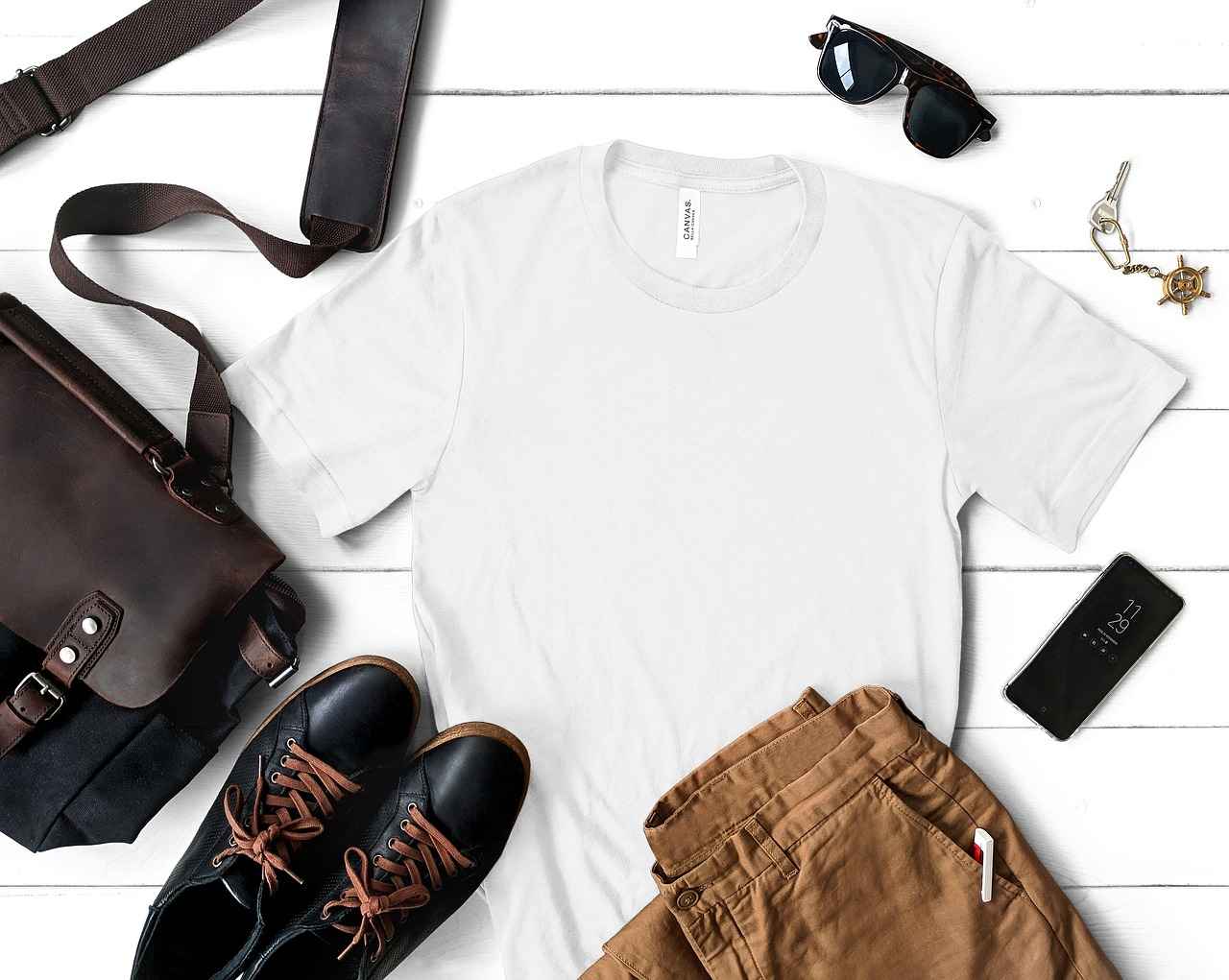
Understanding the Design Process
is a vital component when creating custom t-shirts, especially those that incorporate your own images or designs. This process goes beyond mere aesthetics; it involves a thoughtful approach to elements that can significantly impact the final product.
Firstly, selecting the right images is crucial. Opt for images that are not only high-quality but also resonate with your personal style or the message you want to convey. Images should be clear and vibrant, ensuring they stand out on the fabric. It’s important to consider the resolution of the image as well; a minimum of 300 DPI is recommended to maintain clarity when printed.
Next, choosing colors plays a significant role in the design process. Colors evoke emotions and can enhance the overall appeal of your t-shirt. Familiarize yourself with color theory to create harmonious designs. Complementary colors can make your images pop, while a monochromatic scheme can convey sophistication.
Additionally, placement of the design on the t-shirt is another key consideration. Whether you prefer a centered graphic, a pocket design, or a full-bleed print, the placement can dramatically alter the visual impact. Experiment with different layouts to find the most appealing arrangement.
Finally, understanding the printing techniques available is essential. Methods like screen printing and direct-to-garment (DTG) printing can affect the durability and appearance of your design. Each technique has its pros and cons, so choose one that aligns with your design’s complexity and the intended use of the t-shirt.
In conclusion, the design process for custom t-shirts requires careful consideration of images, colors, and placement. By mastering these elements, you can create visually appealing and meaningful t-shirts that reflect your unique style.
Choosing the Right Image
When it comes to designing custom t-shirts, selecting a high-quality image is crucial for achieving the best results. The image you choose will significantly impact the overall look and feel of your t-shirt, making it essential to consider several factors during the selection process.
- Clarity: The image must be sharp and clear. A blurry or pixelated image will not only look unprofessional but may also lead to dissatisfaction with the final product.
- Vibrancy: Opt for images that are vibrant and colorful. Bright colors tend to stand out more, making your design eye-catching and appealing.
- Meaningfulness: Choose images that resonate with you or your target audience. A meaningful image can evoke emotions and create a stronger connection with the wearer.
Additionally, the resolution of your image plays a vital role in print quality. It is recommended to use images with a resolution of at least 300 DPI (dots per inch) to ensure that the details are crisp and clear. Lower resolution images can lead to pixelation, which detracts from the quality of the final print.
It’s also important to consider image licensing and copyright. Ensure that you have the right to use the selected image, especially if it’s not your own creation. This step is crucial to avoid any legal issues that may arise from unauthorized use.
In summary, the right image is a cornerstone of a successful custom t-shirt design. By focusing on clarity, vibrancy, and meaningfulness, along with adhering to resolution and licensing guidelines, you can create a stunning and impactful t-shirt that truly represents your vision.
Image Resolution and Quality
are critical aspects of designing custom t-shirts, especially when incorporating personal photos or intricate graphics. When it comes to printing, the quality of your images can significantly affect the final product. To achieve the best results, it is essential to understand the importance of image resolution.
High-resolution images are vital for ensuring excellent print quality. For t-shirt designs, it is recommended to aim for at least 300 DPI (dots per inch). This high DPI ensures that your images remain sharp and clear, avoiding any pixelation that can occur with lower resolutions. Pixelation not only detracts from the visual appeal but also undermines the overall quality of the final print.
Moreover, it’s essential to consider the size of the image in relation to the t-shirt dimensions. A larger image may require a higher resolution to maintain clarity when scaled. When selecting images, look for those that are not only high in resolution but also vibrant and engaging, as this will help your design stand out.
Utilizing vector images can also be beneficial, as they can be resized without losing quality. This flexibility allows for greater creativity in your designs, enabling you to adjust the size to fit your t-shirt perfectly.
In conclusion, investing time in selecting high-resolution images and understanding the intricacies of image quality is crucial for anyone looking to create custom t-shirts. By ensuring your images are of the highest quality, you can achieve stunning results that will showcase your design effectively and leave a lasting impression.
| Resolution | Print Quality |
|---|---|
| 72 DPI | Low quality, pixelation likely |
| 150 DPI | Medium quality, acceptable for some uses |
| 300 DPI | High quality, ideal for t-shirt printing |
Image Licensing and Copyright
When embarking on the journey of designing custom t-shirts, one critical aspect to consider is . It is essential to ensure that you have the appropriate rights to use any image you select for your design. This precaution not only helps you avoid potential legal issues but also guarantees that your creation is original and reflects your unique style.
Using copyrighted images without permission can lead to serious consequences, including legal action and financial penalties. Therefore, it is crucial to understand the different types of image licenses:
- Public Domain: Images in the public domain can be used freely without permission or attribution.
- Creative Commons: These licenses allow for various uses, but some may require attribution or restrict commercial use.
- Royalty-Free: You can use these images without paying royalties, but you may still need to purchase a license.
- Exclusive Rights: This type of license grants you exclusive rights to use the image, often at a higher cost.
To ensure compliance with copyright laws, follow these steps:
- Research the Source: Always verify the source of the image and its licensing terms.
- Obtain Permissions: If necessary, seek permission from the copyright holder.
- Keep Documentation: Maintain records of licenses or permissions for your reference.
Additionally, consider using images you have created yourself or those from stock photo websites that offer licensed images specifically for commercial use. This approach not only mitigates legal risks but also enhances the originality of your design.
In conclusion, paying attention to is a crucial step in the custom t-shirt design process. By ensuring you have the rights to use selected images, you can confidently create designs that are both legally sound and uniquely yours.
Design Software and Tools
When it comes to creating custom t-shirts, the choice of design software plays a crucial role in the overall quality and appeal of your final product. Fortunately, there are numerous options available, catering to both beginners and professional designers alike. This section will explore various software options, highlighting their features and benefits to help you choose the right tool for your t-shirt design project.
- Online Design Platforms: These user-friendly tools are perfect for beginners. Platforms like Canva and Teespring allow users to create stunning designs with drag-and-drop features, pre-made templates, and a vast library of graphics and fonts. They are accessible from any device with an internet connection, making them convenient for on-the-go design.
- Graphic Design Software: For those with more experience, professional software like Adobe Illustrator and CorelDRAW offer advanced features for intricate designs. These programs provide extensive tools for vector graphics, allowing for high-quality prints that maintain their clarity regardless of size. They also support multiple file formats, ensuring compatibility with various printing techniques.
- Specialized T-Shirt Design Software: Programs like Printful and Designhill are tailored specifically for t-shirt design. They offer unique features such as mockup generators and integrated printing services, making it easy to visualize how your design will look on a t-shirt before placing an order.
- Mobile Applications: For those who prefer designing on their smartphones, apps like Over and Snaptee provide powerful tools right at your fingertips. These applications allow for quick edits and designs, making them ideal for those who want to create on the move.
In conclusion, choosing the right design software is essential for creating custom t-shirts that reflect your personal style. Whether you are a novice or an expert, there is a tool available that can help you bring your creative vision to life.

Choosing the Right T-Shirt Material
The material of your t-shirt plays a crucial role in determining its overall appearance and comfort. When it comes to custom t-shirts, understanding the different types of fabrics available is essential for making an informed choice that aligns with your design and intended use.
| Fabric Type | Benefits | Considerations |
|---|---|---|
| Cotton |
|
|
| Polyester |
|
|
| Blends (Cotton/Polyester) |
|
|
When selecting a fabric for your custom t-shirt, consider the intended use. For example, if the t-shirt is for a sports event, moisture-wicking polyester may be the best choice. In contrast, if comfort is the priority, a soft cotton option could be ideal. Additionally, eco-friendly materials, such as organic cotton or recycled fabrics, are gaining popularity among environmentally conscious consumers.
In conclusion, the choice of fabric significantly impacts not only the look and feel of your custom t-shirt but also its functionality and durability. By understanding the characteristics of various materials, you can make a choice that enhances your design and meets your specific needs.
Cotton vs. Polyester
When it comes to selecting the right material for your custom t-shirt designs, understanding the characteristics of cotton and polyester is essential. Each fabric offers unique benefits that cater to different needs and preferences.
Cotton is renowned for its breathability and comfort. This natural fiber allows air to circulate, making it an ideal choice for warm weather or active wear. Its softness against the skin enhances comfort, making it a popular option for everyday clothing. Additionally, cotton is hypoallergenic, making it suitable for those with sensitive skin. However, cotton does have its drawbacks, such as a tendency to shrink and wrinkle, which can affect the longevity of your custom designs.
On the other hand, polyester is celebrated for its durability and moisture-wicking properties. This synthetic fabric is resistant to shrinking, stretching, and wrinkling, ensuring that your custom t-shirts maintain their shape and appearance over time. Polyester excels in moisture management, drawing sweat away from the body and allowing it to evaporate quickly, making it a preferred choice for athletic wear. However, polyester is less breathable than cotton, which can lead to discomfort in hot conditions.
| Feature | Cotton | Polyester |
|---|---|---|
| Breathability | High | Moderate |
| Comfort | Very Comfortable | Less Comfortable |
| Durability | Moderate | High |
| Moisture-Wicking | Low | High |
| Sensitivity | Hypoallergenic | May irritate sensitive skin |
In conclusion, choosing between cotton and polyester depends on the specific requirements of your design. If you prioritize comfort and breathability, cotton may be the better option. Conversely, if you seek durability and moisture management, polyester could be the ideal choice. Understanding these differences will help you create the perfect custom t-shirt tailored to your needs.
Eco-Friendly Options
in custom t-shirt design are becoming increasingly important as consumers become more aware of their environmental impact. Utilizing sustainable materials not only contributes to a healthier planet but also resonates with customers who prioritize eco-conscious choices. In this section, we will explore various eco-friendly fabric options that can enhance your custom t-shirt designs.
One of the most popular sustainable materials is organic cotton. Unlike conventional cotton, organic cotton is grown without harmful pesticides or synthetic fertilizers, making it a safer choice for both the environment and farmers. This natural fiber is not only soft and breathable but also biodegradable, reducing landfill waste. When designing custom t-shirts, opting for organic cotton can elevate your brand’s commitment to sustainability.
Another excellent option is recycled fabrics. These materials are derived from post-consumer waste, such as plastic bottles or discarded textiles. By choosing recycled fabrics, you help reduce the demand for virgin materials and minimize the carbon footprint associated with production. Recycled polyester, for instance, is a popular choice due to its durability and moisture-wicking properties, making it ideal for activewear and casual t-shirts alike.
Additionally, consider using hemp or bamboo fabrics. Hemp is a fast-growing plant that requires minimal water and no pesticides, making it an incredibly sustainable choice. Bamboo, on the other hand, is naturally antibacterial and moisture-wicking, providing comfort and functionality. Both materials offer unique textures and qualities that can enhance your custom t-shirt designs.
Incorporating eco-friendly options into your custom t-shirt designs not only meets the growing consumer demand for sustainable products but also sets your brand apart as a responsible choice. By prioritizing materials like organic cotton, recycled fabrics, hemp, and bamboo, you can create stylish and environmentally friendly apparel that appeals to a conscious audience.
| Eco-Friendly Material | Benefits |
|---|---|
| Organic Cotton | Soft, breathable, biodegradable |
| Recycled Fabrics | Reduces waste, durable, lowers carbon footprint |
| Hemp | Fast-growing, minimal water, no pesticides |
| Bamboo | Antibacterial, moisture-wicking, comfortable |
In conclusion, the shift towards sustainable materials in custom t-shirt design is not just a trend but a necessary evolution in the fashion industry. By embracing eco-friendly options, you can contribute to a more sustainable future while offering unique products that resonate with environmentally conscious consumers.

Printing Techniques Explained
When it comes to creating custom t-shirts, the printing method you choose plays a crucial role in determining the overall quality and longevity of your designs. Each printing technique has its unique advantages and limitations, which can significantly impact the final product. Understanding these methods will empower you to make an informed decision that aligns with your project goals.
| Printing Method | Key Features | Best For |
|---|---|---|
| Screen Printing | Durable, vibrant colors, suitable for bulk orders | Simple designs with fewer colors |
| Direct-to-Garment (DTG) | High detail, full-color prints, soft finish | Small orders and intricate designs |
| Heat Transfer | Versatile, allows for detailed imagery | Small runs and custom designs |
| Sublimation | Vibrant colors, permanent prints on polyester | All-over prints and polyester fabrics |
Screen Printing is one of the most traditional and widely used methods. It involves creating a stencil (or screen) for each color in the design, making it ideal for designs with limited colors. The ink is pushed through the screen onto the fabric, resulting in vibrant and long-lasting prints. This method is particularly cost-effective for large orders.
Direct-to-Garment (DTG) printing, on the other hand, is a modern technique that uses inkjet technology to print directly onto the fabric. This method is perfect for detailed designs with a wide range of colors and is best suited for small batches. The result is a soft feel, as the ink penetrates the fabric rather than sitting on top.
When considering your options, it’s essential to evaluate the durability and quality of the prints based on your intended use. For example, if you’re creating t-shirts for a sports team, you might prioritize durability and opt for screen printing. Alternatively, if you’re designing shirts for a one-time event, DTG might be the better choice.
In conclusion, understanding the different printing techniques available will help you select the best option for your custom t-shirt project. By considering factors like design complexity, order size, and fabric type, you can ensure that your final product meets your expectations and lasts for a long time.
Screen Printing
is a time-honored printing technique that has gained popularity due to its ability to produce vibrant colors and long-lasting results. This method involves using a stencil to apply ink onto a substrate, typically fabric, making it an ideal choice for creating custom t-shirts, especially in bulk.
One of the primary advantages of screen printing is its efficiency for large orders. When producing a significant number of items, the setup time is offset by the speed of the printing process. This makes it a cost-effective option for businesses, events, or promotional campaigns where uniformity and color fidelity are essential.
Moreover, screen printing excels in producing designs that utilize fewer colors. The process allows for rich, saturated colors that stand out, making it perfect for logos and simple graphics. For intricate designs with multiple hues, however, other methods like Direct-to-Garment (DTG) printing might be more suitable.
Durability is another hallmark of screen printing. The inks used are typically thicker and adhere well to the fabric, ensuring that the designs withstand numerous washes without fading or cracking. This durability makes screen-printed items a popular choice for sports teams, promotional merchandise, and everyday wear.
While screen printing offers many benefits, it is essential to consider the design limitations. Complex images with gradients and multiple colors may not translate well, necessitating a more straightforward approach to design. Additionally, the setup costs can be higher for small runs, which might deter individuals looking to print just a few items.
In conclusion, screen printing remains a reliable choice for those seeking high-quality, durable prints with vibrant colors. Whether for personal use or business needs, understanding the strengths and limitations of this technique can help you make informed decisions in your custom t-shirt design journey.
Direct-to-Garment (DTG) Printing
is a modern and innovative method that has transformed the way custom t-shirts are produced. This printing technique allows for intricate designs with an extensive palette of colors, making it an ideal choice for artists and designers looking to showcase their creativity.
One of the standout features of DTG printing is its ability to handle small orders efficiently. Unlike traditional printing methods that often require large minimum quantities, DTG allows you to print just one shirt or a few pieces, making it perfect for personalized gifts or unique fashion statements. This flexibility means that you can experiment with different designs without the pressure of large-scale production.
Furthermore, DTG printing excels in reproducing detailed artwork. Whether it’s a complex graphic or a vibrant photograph, this technique captures every nuance, ensuring that your designs look stunning on fabric. The result is a soft finish that feels comfortable against the skin, unlike some other printing methods that can create a stiff or heavy texture.
In addition to its aesthetic benefits, DTG printing is also environmentally friendly. It typically uses water-based inks, which are less harmful than traditional inks, and the process generates minimal waste. This makes it a great choice for those who are conscious about their environmental impact.
When considering DTG printing for your custom t-shirts, it’s essential to choose a reliable printing service. Look for companies that offer high-quality prints and have positive customer reviews. By doing so, you can ensure that your designs are brought to life in the best possible way.
In conclusion, Direct-to-Garment printing is an excellent option for anyone looking to create custom t-shirts with intricate designs and vibrant colors. Its ability to cater to small orders and provide a soft finish makes it a favored choice among designers and consumers alike. Embrace the creativity that DTG printing offers and start designing your unique t-shirts today!

Tips for Effective T-Shirt Design
Creating a successful t-shirt design involves a blend of thoughtful planning and creativity. Here are some practical tips to enhance your design process:
- Start with a Concept: Before diving into design, brainstorm ideas that reflect your message or theme. Consider what emotions or stories you want to convey through your t-shirt.
- Research Trends: Stay updated with current fashion trends and popular designs. This will help you understand what resonates with your target audience and inspire your creativity.
- Sketch Your Ideas: Put your thoughts on paper. Sketching allows you to visualize your ideas and make adjustments before moving to digital design.
- Choose the Right Color Palette: Colors evoke emotions and can significantly impact your design’s effectiveness. Use tools like Adobe Color to create harmonious color schemes that align with your concept.
- Select Appropriate Fonts: Typography plays a crucial role in your design. Choose fonts that complement your theme and ensure they are legible from a distance.
- Utilize Design Software: Programs like Adobe Illustrator or Canva can help bring your sketches to life. Experiment with different layouts and elements to refine your design.
- Consider Placement: The positioning of your design on the t-shirt matters. Test various placements to find the most visually appealing option, whether centered, off-center, or all-over prints.
- Seek Feedback: Before finalizing your design, share it with friends or fellow designers. Constructive criticism can provide valuable insights and help you improve your design.
- Test Your Design: If possible, create a sample t-shirt to see how your design translates onto fabric. This step can help you identify any necessary tweaks or adjustments.
By following these tips, you can enhance your t-shirt design process and create unique, eye-catching designs that resonate with your audience.
Color Theory Basics
Color theory is an essential aspect of design that can greatly influence the effectiveness of your custom t-shirt creations. By understanding how colors interact with one another, you can create visually appealing designs that capture attention and evoke emotions.
At its core, color theory involves the study of colors and their relationships. It can be broken down into several key concepts:
- Primary Colors: The foundation of all colors, consisting of red, blue, and yellow. These colors cannot be created by mixing other colors.
- Secondary Colors: Formed by mixing primary colors. For example, mixing red and blue creates purple.
- Tertiary Colors: Created by mixing a primary color with a secondary color, resulting in hues like red-orange or blue-green.
One of the most important elements of color theory is the concept of complementary colors. These are colors that are opposite each other on the color wheel, such as blue and orange or red and green. Utilizing complementary colors in your t-shirt designs can create a striking contrast that makes your images pop and draws the viewer’s attention.
Additionally, analogous colors, which are colors that sit next to each other on the color wheel, can be used to create a more harmonious and cohesive look. For instance, using shades of blue, blue-green, and green can give your design a calming effect.
When designing custom t-shirts, consider the psychological effects of colors as well. Different colors can evoke different feelings and associations. For example:
- Red: Energy, passion, and excitement
- Blue: Trust, calmness, and professionalism
- Yellow: Happiness, optimism, and creativity
Incorporating these elements of color theory into your t-shirt designs will not only enhance their visual appeal but also communicate your intended message more effectively. By making informed choices about color combinations, you can create designs that resonate with your audience and stand out in a crowded market.
Typography and Fonts
When it comes to designing custom t-shirts, choosing the right fonts plays a pivotal role in effectively conveying your message. The typography you select not only impacts readability but also influences the overall aesthetic of your design. Here are some key considerations to keep in mind:
- Legibility: Ensure that the fonts you choose are easy to read from a distance. Avoid overly decorative fonts that may confuse your audience.
- Theme Alignment: Select fonts that reflect the theme of your t-shirt design. For example, a playful font may suit a fun, casual design, while a sleek, modern font may be better for a minimalist approach.
- Font Pairing: If your design includes multiple fonts, ensure they complement each other. A good rule of thumb is to mix a bold font with a more understated one to create visual interest.
- Size and Spacing: Pay attention to the size and spacing of your text. Proper kerning and leading can enhance readability and overall visual appeal.
- Color Contrast: Choose font colors that contrast well with the t-shirt fabric. This ensures that your message stands out and is easily readable.
Incorporating these elements into your design process will not only enhance the visual impact of your t-shirt but also ensure that your message is communicated effectively. Remember, the right typography can transform a simple design into a powerful statement piece.
Ultimately, the fonts you choose should resonate with your intended audience and reflect your unique style. Experiment with different options and trust your instincts to create a design that truly represents you.

Finalizing Your Custom T-Shirt Order
Once you have completed your design, the next crucial step is to place your order. This phase is essential for ensuring that your vision translates perfectly into the final product. Here are some key considerations to keep in mind:
- Review All Details: Take the time to carefully check all the elements of your design. This includes verifying the image quality, color choices, and text accuracy. Any small mistake can lead to dissatisfaction with the final outcome.
- Request a Proof: Before finalizing your order, always ask for a proof. This is a preliminary version of your t-shirt that allows you to see how your design will look when printed. It’s an opportunity to catch any errors or make adjustments.
- Check Sizing and Fit: Make sure to select the correct sizes for your t-shirts. Refer to the sizing chart provided by the printer to ensure a comfortable fit for everyone.
- Choose a Reliable Printer: Research potential printers to find one that has a good reputation for quality and service. Look for customer reviews and ask for samples of their previous work to gauge their capabilities.
- Understand the Pricing: Familiarize yourself with the pricing structure. Be aware of any additional costs that may arise, such as shipping fees or charges for extra colors in your design.
By following these steps, you can ensure that your custom t-shirt order is completed smoothly and meets your expectations. This attention to detail will help you achieve a final product that not only looks great but also reflects your personal style.
Conclusion: Taking the time to finalize your custom t-shirt order carefully will lead to a more satisfying end result. With proper planning and attention to detail, you can create a unique piece that you will be proud to wear or gift.
Proofing Your Design
is a crucial step in the process of creating custom t-shirts. Before you finalize your order, it is imperative to request a proof from your printer. This essential step ensures that your design looks exactly as you intended it to and provides an opportunity to make any necessary adjustments.
When you receive the proof, take the time to carefully review every aspect of the design. Check for any discrepancies in colors, image placement, and text alignment. It’s important to confirm that the resolution is appropriate and that the design is free of errors. A well-reviewed proof can save you from costly mistakes and dissatisfaction with the final product.
Additionally, consider the following points when proofing your design:
- Color Accuracy: Ensure that the colors in the proof match your expectations. Different printing methods may produce variations, so it’s wise to clarify any concerns with your printer.
- Text Clarity: Make sure that all text is legible and correctly spelled. This is especially important for designs that include slogans or personal messages.
- Image Quality: Verify that the images are sharp and clear. Blurry or pixelated images can compromise the overall look of your t-shirt.
- Design Placement: Confirm that the placement of your design is as intended. A slight misalignment can significantly affect the final appearance.
In conclusion, requesting a proof is not just a formality; it is a vital part of the design process that ensures your custom t-shirt meets your expectations. By taking the time to thoroughly review the proof, you can avoid potential pitfalls and create a product that you will be proud to wear or gift.
Choosing a Reliable Printer
is crucial for ensuring that your custom t-shirt designs are produced to the highest quality standards. A reputable printer not only delivers excellent print results but also provides outstanding customer service, which is essential for a smooth design and ordering process.
When selecting a printer, it is important to conduct thorough research. Start by reading reviews from previous customers. Websites like Yelp, Google Reviews, and specialized printing forums can offer valuable insights into the printer’s reliability, quality, and customer service. Look for printers with a consistent track record of positive feedback.
Additionally, consider asking for samples of their work. This allows you to assess the quality of their printing firsthand. Pay attention to the clarity of the images, the vibrancy of colors, and the overall feel of the fabric. High-quality samples can be a strong indicator of the printer’s capabilities.
Another key factor is communication. A reliable printer should be responsive and willing to answer any questions you may have about their processes, materials, and pricing. Clear communication can help prevent misunderstandings and ensure that your design vision is accurately realized.
It’s also wise to inquire about the printing techniques they use. Different methods, such as screen printing or direct-to-garment printing, can yield varying results. Understanding these options can help you choose a printer that aligns with your specific design needs.
Lastly, consider the turnaround time and pricing. A reputable printer will provide transparent pricing and realistic timelines for order completion. Balancing quality with affordability is essential for a successful printing experience.
In conclusion, taking the time to select a reliable printer can significantly impact the success of your custom t-shirt project. By researching reviews, requesting samples, and ensuring open communication, you can make an informed decision that leads to high-quality results and customer satisfaction.
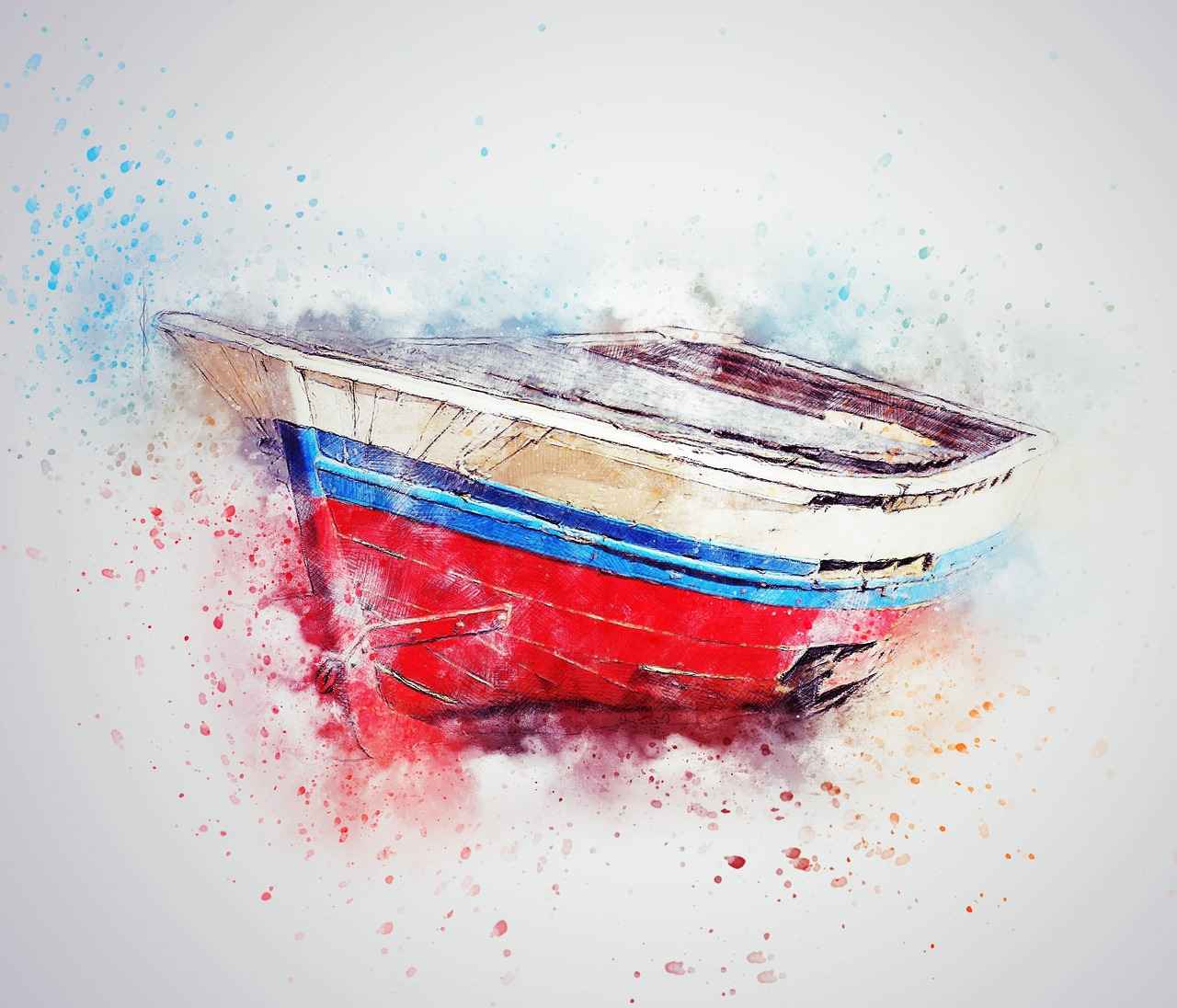
Conclusion: Making Your Mark with Custom T-Shirts
Designing custom t-shirts with your own photos is not just a creative outlet; it’s a fantastic way to showcase your personality and share your unique story with the world. Whether you’re looking to create a memorable gift, a promotional item for your business, or simply a fashionable statement, custom t-shirts provide an excellent platform for self-expression.
To embark on this exciting journey, it’s essential to understand the design process. Start by selecting images that resonate with you. These could be cherished memories, artistic designs, or even quotes that inspire you. The key is to choose images that are high-quality and have a resolution of at least 300 DPI to ensure crisp printing results.
Next, consider the colors you want to use. Color theory plays a vital role in design; complementary colors can make your images pop, attracting more attention. Additionally, think about the placement of your design on the t-shirt. Centered designs are classic, while off-center placements can add a modern twist.
When it comes to materials, your choice of fabric can significantly impact the final product. Cotton is breathable and comfortable, while polyester offers durability and moisture-wicking properties. For those who are environmentally conscious, consider using organic cotton or recycled materials to create a more sustainable product.
Understanding printing techniques is also crucial. Screen printing is ideal for bold designs with fewer colors, while Direct-to-Garment (DTG) printing allows for intricate, colorful designs. Each method has its own benefits, so choose one that aligns with your design and quantity needs.
Finally, once your design is ready, it’s important to proof your work before placing an order. This ensures that everything appears as intended and allows for any last-minute adjustments. Selecting a reliable printer is equally important; read reviews and request samples to guarantee quality.
In conclusion, designing custom t-shirts with your own photos is a fun and rewarding way to express your individuality. With the right tools and techniques, you can create unique pieces that tell your story, making a lasting impression.
Frequently Asked Questions
- What type of images work best for custom t-shirt designs?
High-quality images that are clear and vibrant are essential for creating stunning custom t-shirts. Aim for images that resonate with you and have a resolution of at least 300 DPI to ensure crisp details.
- How do I choose the right t-shirt material?
Consider the feel and purpose of your t-shirt. Cotton is breathable and comfy, while polyester is durable and moisture-wicking. Eco-friendly options, like organic cotton, are also great for those looking to make a sustainable choice.
- What printing technique should I use for my design?
It depends on your design! Screen printing is fantastic for vibrant colors and bulk orders, while Direct-to-Garment (DTG) printing is ideal for intricate designs with many colors. Choose based on your design complexity and order size.
- How can I ensure my design looks good on the t-shirt?
Always request a proof before placing your order. This step allows you to see how your design will appear on the t-shirt and make any necessary adjustments for the best outcome.
- Where can I find a reliable printer for my custom t-shirts?
Research is key! Look for reputable printers with good reviews, and don’t hesitate to ask for samples of their work to ensure they can deliver the quality you desire.
